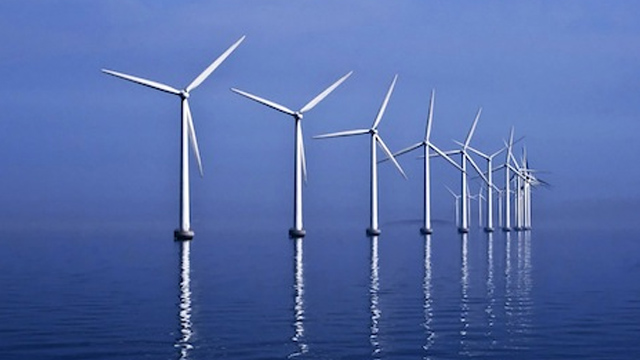Wind power may be the leading source of renewable electricity (apart from hydro), but we haven’t even scratched the surface of its true potential. Of the 238,000 megawatts of wind capacity installed at the start of 2012, just 4,600 megawatts came from offshore wind farms. On a planet that’s two-thirds water, that leaves plenty of room for improvement.
But, according to a new Earth Policy Institute report, wind power capacity has increased six-fold since 2006, and at least twenty countries are planning to join the twelve that already tap powerful winds over the sea.
Europe by far and away leads the world in offshore wind development, writes J. Matthew Roney:
More than 90 percent of offshore wind installations are in Europe. Denmark erected the world’s first offshore wind farm in 1991—the 5-megawatt Vindeby project. Offshore wind grew sporadically through the 1990s, as Sweden and the Netherlands also added capacity. Denmark added 400 megawatts of offshore capacity from 2001 to 2003. Since then, however, despite several other countries joining in, the United Kingdom has totally dominated the market. Of the 520 megawatts of new offshore wind capacity installed in Europe in the first half of 2012, roughly 80 percent was in the Irish Sea and North Sea waters of the United Kingdom. The rest was built by Belgium, Germany, and Denmark.
Japan and China are the only other countries with operational offshore wind farms. While the United States trails only China in wind capacity on land, it has yet to install even one offshore turbine.
But that should change in the next couple years. Cape Wind, the proposed 470-megawatt project off the coast of Massachusetts, is slated to begin construction in 2013 after facing opposition on multiple fronts. And two smaller projects — a 25-megawatt farm off Atlantic City, New Jersey, and a 30-megawatt project in Rhode Island waters — appear ready to go ahead.
Meanwhile, the U.S. government is addressing aesthetic concerns about offshore wind power with its Smart from the Start leasing program, a Bureau of Ocean Energy Management initiative that will auction off a strech of East Coast ocean development. The area is all at least 10 miles from land, so the turbines won’t be visible from shore.
Read the report here.
(via Treehugger)
